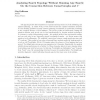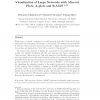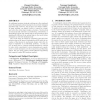7 search results - page 1 / 2 » Where Ignoring Delete Lists Works, Part II: Causal Graphs |
AIPS
2011
12 years 8 months ago
2011
The ignoring delete lists relaxation is of paramount importance for both satisficing and optimal planning. In earlier work (Hoffmann 2005), it was observed that the optimal relax...
JAIR
2011
2011
Analyzing Search Topology Without Running Any Search: On the Connection Between Causal Graphs and h+
12 years 7 months ago
The ignoring delete lists relaxation is of paramount importance for both satisficing and optimal planning. In earlier work, it was observed that the optimal relaxation heuristic ...
IJMMS
2007
13 years 4 months ago
2007
What does a ‘normal’ computer (or social) network look like? How can we spot ‘abnormal’ sub-networks in the Internet, or web graph? The answer to such questions is vital f...
SPAA
2004
ACM
13 years 10 months ago
2004
ACM
We present the Buffer Heap (BH), a cache-oblivious priority queue that supports Delete-Min, Delete, and Decrease-Key operations in O( 1 B log2 N B ) amortized block transfers fro...
SIGECOM
2006
ACM
13 years 10 months ago
2006
ACM
In multiagent systems, strategic settings are often analyzed under the assumption that the players choose their strategies simultaneously. However, this model is not always realis...



